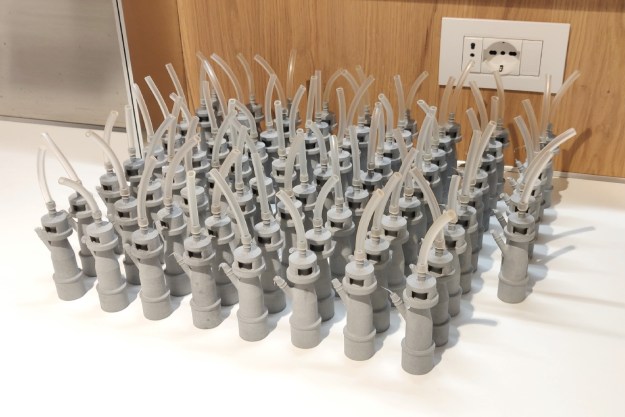
The phrase “3D printed” carries quite a lot of hype these days, so any time we see a product with it in the title, it’s hard not to look at it with a jaundiced eye. Don’t get us wrong; additive manufacturing is definitely a revolutionary technology, but there are certain things just aren’t meant to be made out of plastic. Take 3D-printed shoes, for example. They’re cool, but probably nowhere near as durable or comfortable as a nice pair of leather kicks. More often than not, 3D-printed products are more about hype than they are about practicality.
But eyewear is different. Glasses frames are generally made out of plastic as it is, so 3D-printed spectacles actually make sense – especially in the custom-made product market. Custom frames are often too expensive for the average joe. But an eyewear startup in San Francisco called Protos has found a solution, by using 3D printing and facial recognition technology to make fashionable specs cheaper and more accessible.
The idea goes something like this: Instead of taking time out of your day to visit an eyewear boutique, Protos lets you get personalized frames just by going online and taking a couple pictures. Snap just two shots of your mug and Protos’s advanced styling algorithm will generate a set of frames that’s perfectly built for your unique arch, eyebrow, and bone structure. Check out the video to see more about how it works:
After a bit of extra input from the consumer, the design is finalized and sent to a 3D printer for manufacturing. And they’re not made with your run-of-the-mill plastic either; Protos prints the frames with a proprietary high-strength composite material that’s extremely flexible and impact resistant. The temples can be bent up to 180 degrees without snapping. And unlike other plastics, the material actually becomes more flexible and malleable over time. The lenses are pretty stout as well. They’re made from a scratch-resistant, high-grade polycarbonate that’s treated with an anti-reflective coating.
Protos recently wrapped up a successful crowdfunding campaign, so you can get your hands on a set of customized frames today for just $299 – a fraction of the usual bespoke price tag. Find out more on Protos’s website
Editors' Recommendations
- 3DMakerpro’s Seal is a pocket-sized scanner to make next-gen precision 3D prints
- Need a last-minute Halloween costume? Check out these 3D-printable getups
- Hit takers: The cutting-edge engineering making football helmets safer than ever
- Inside the quest to 3D print a perfectly palatable steak
- Father’s Day Gift Idea: These cheap 3D printers are on sale for less than $300




